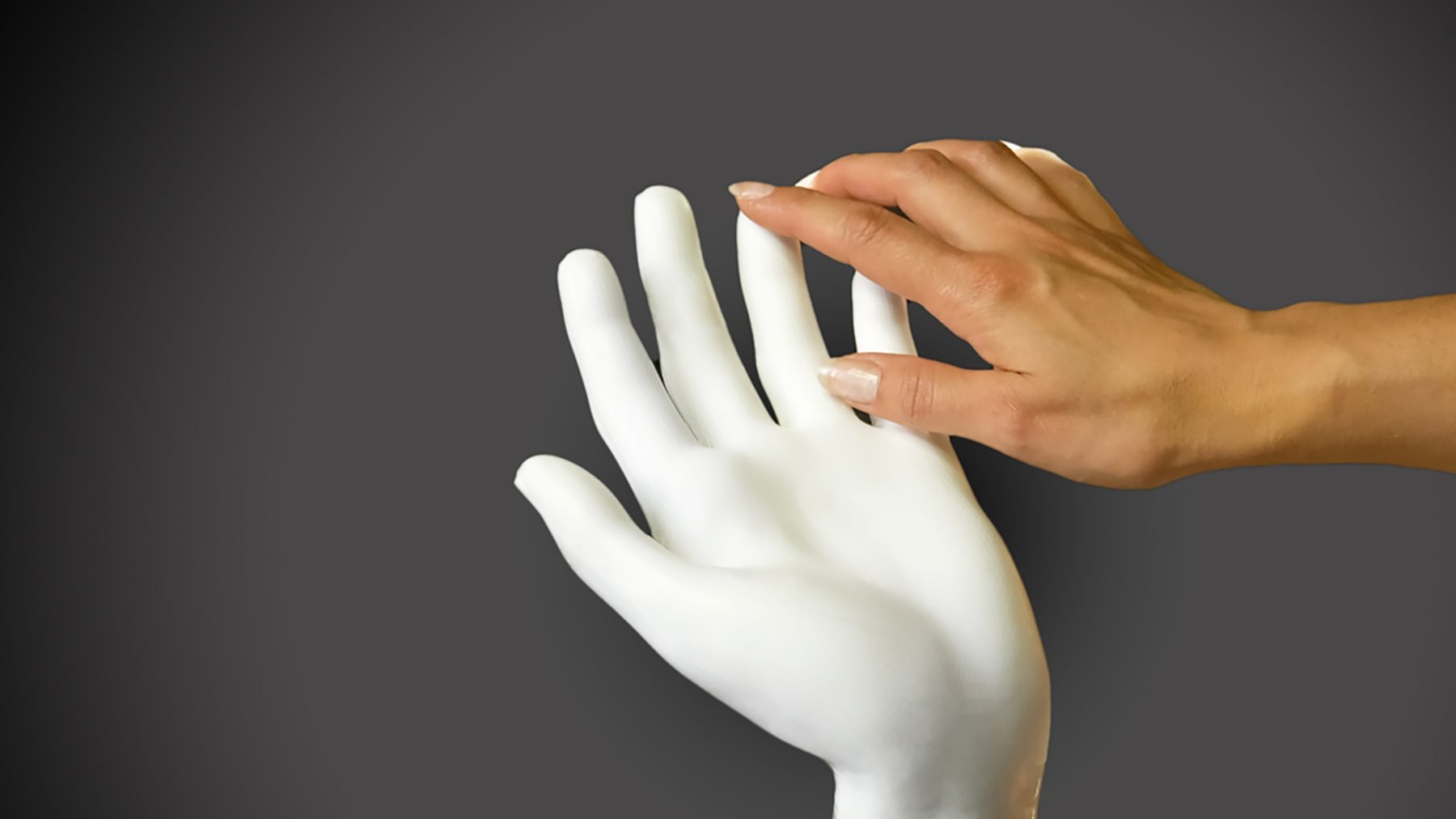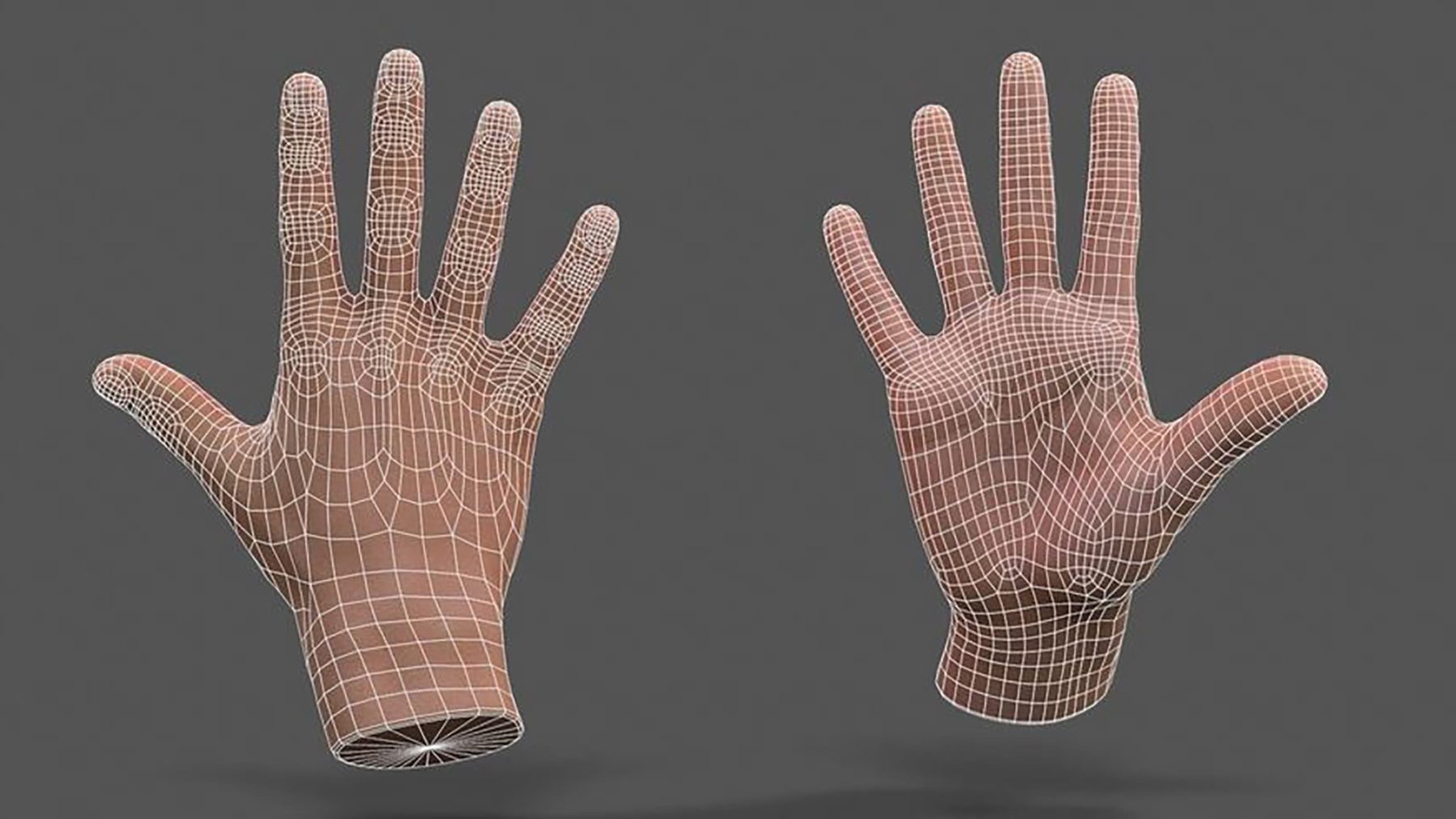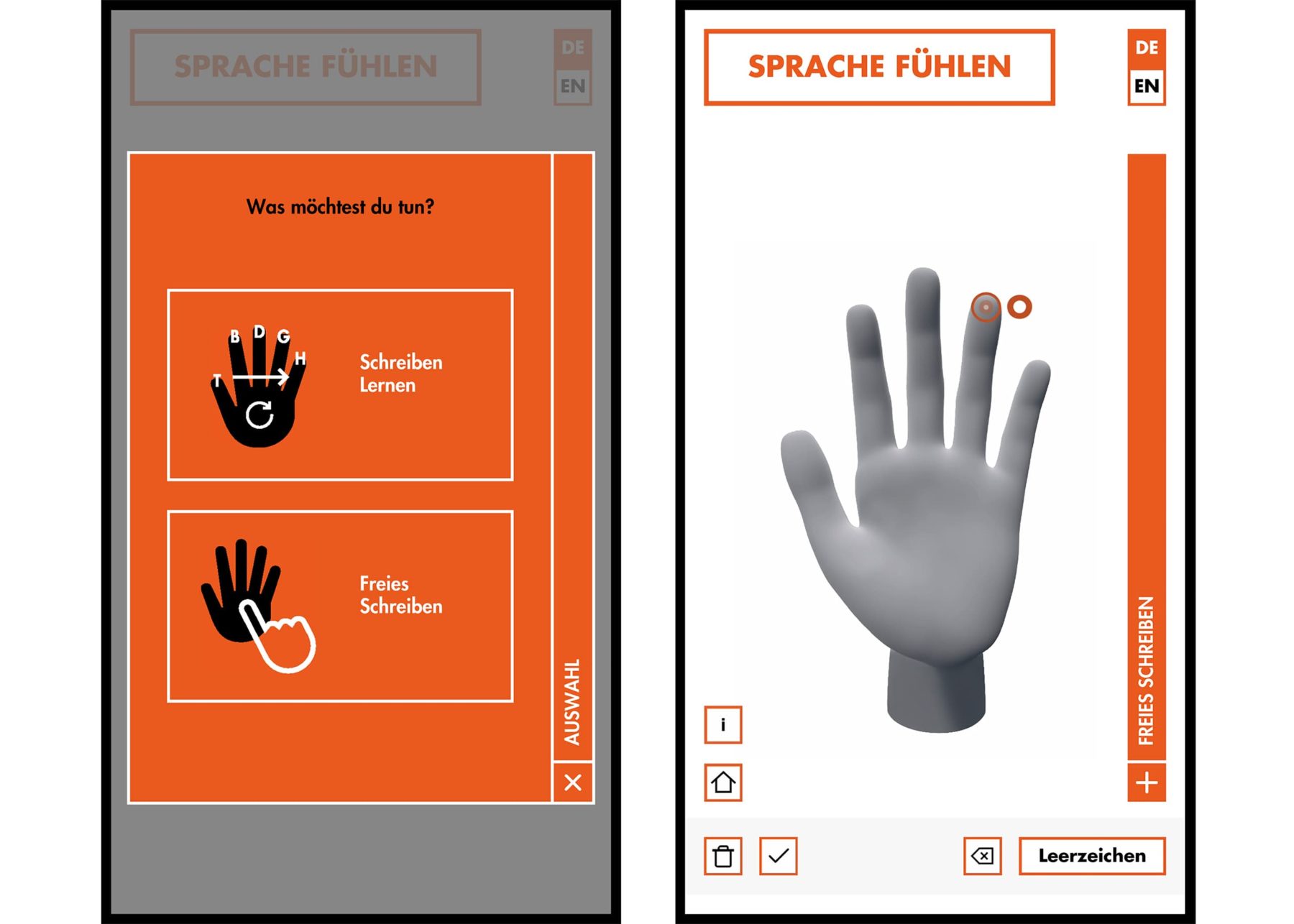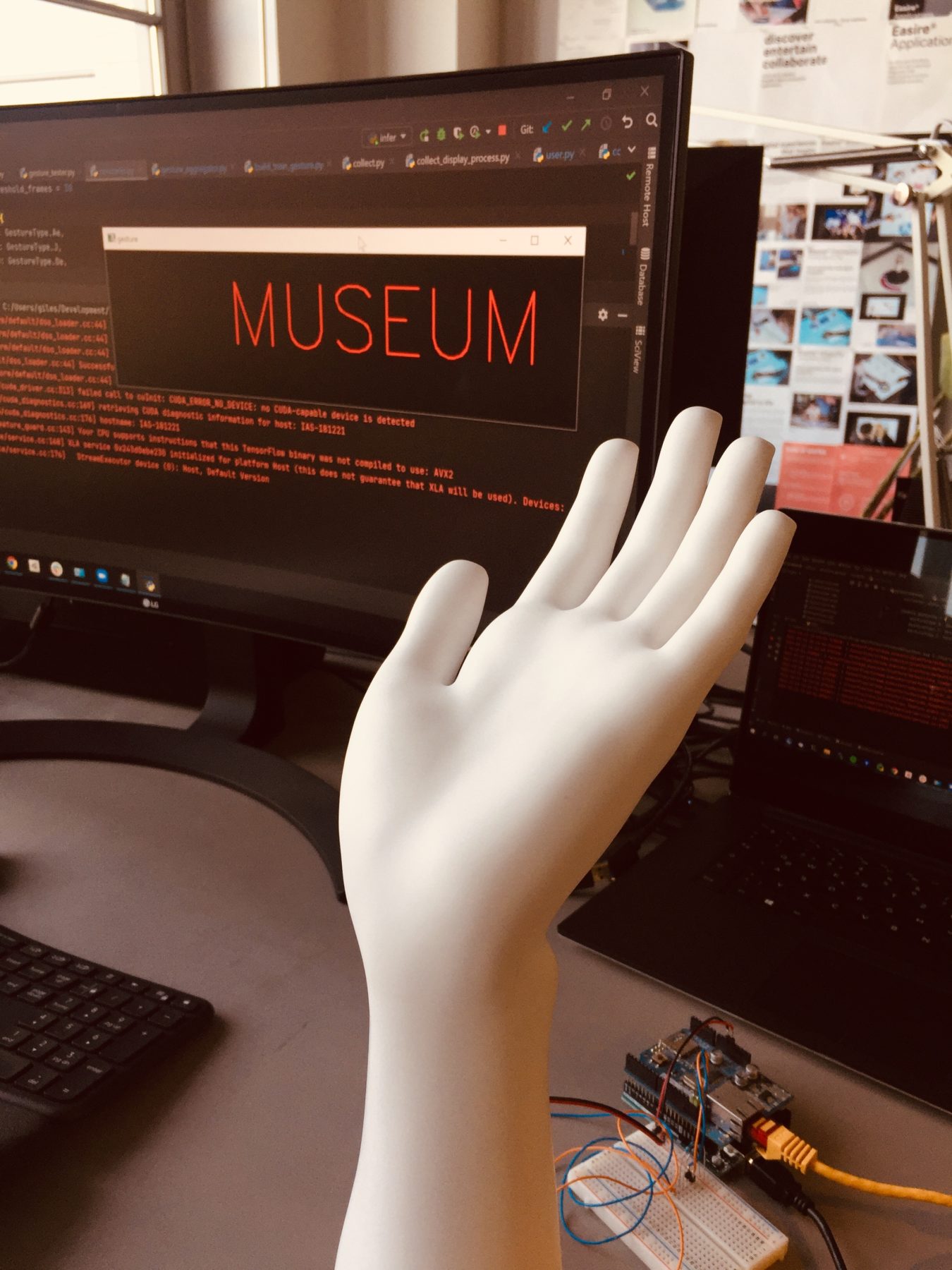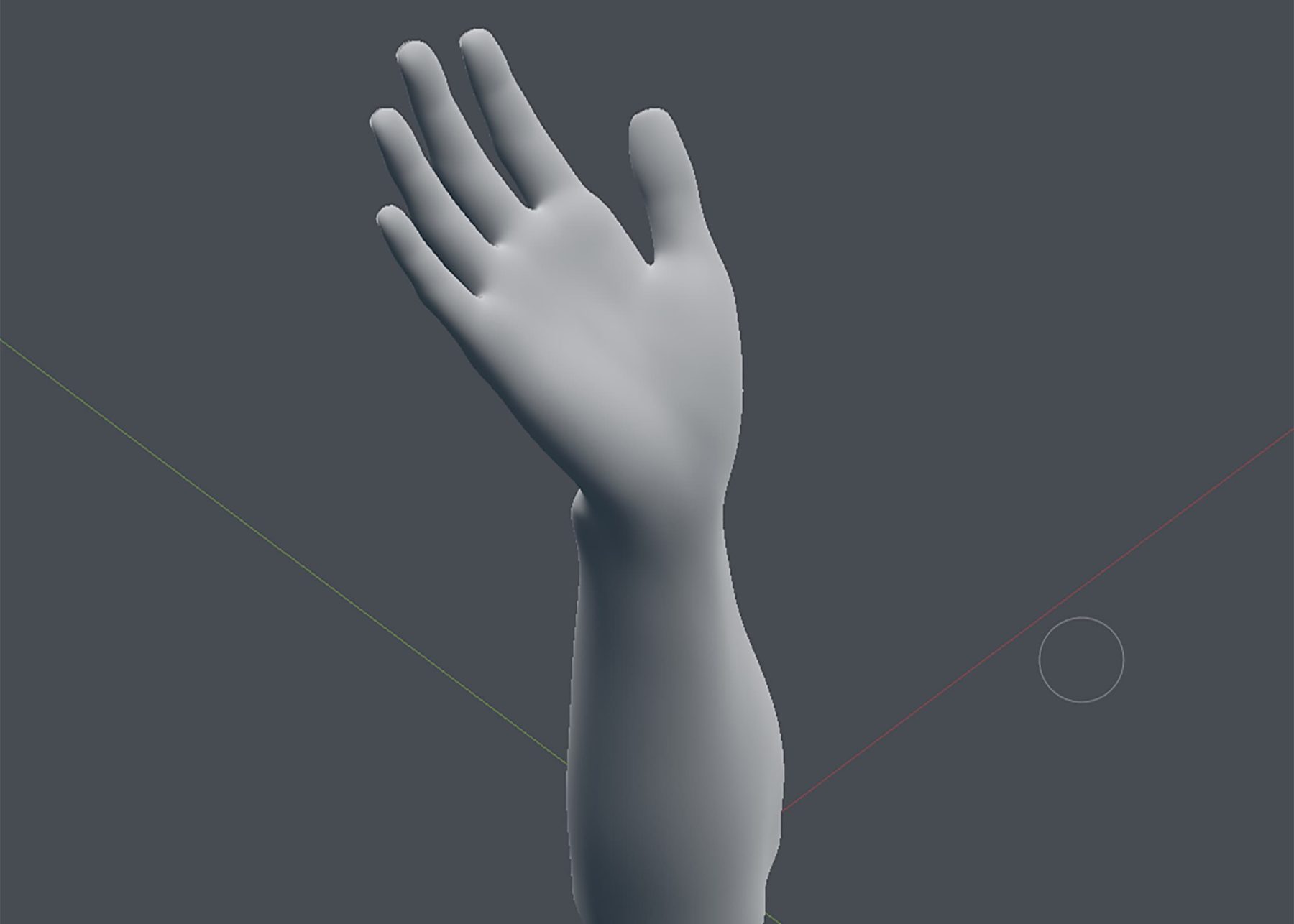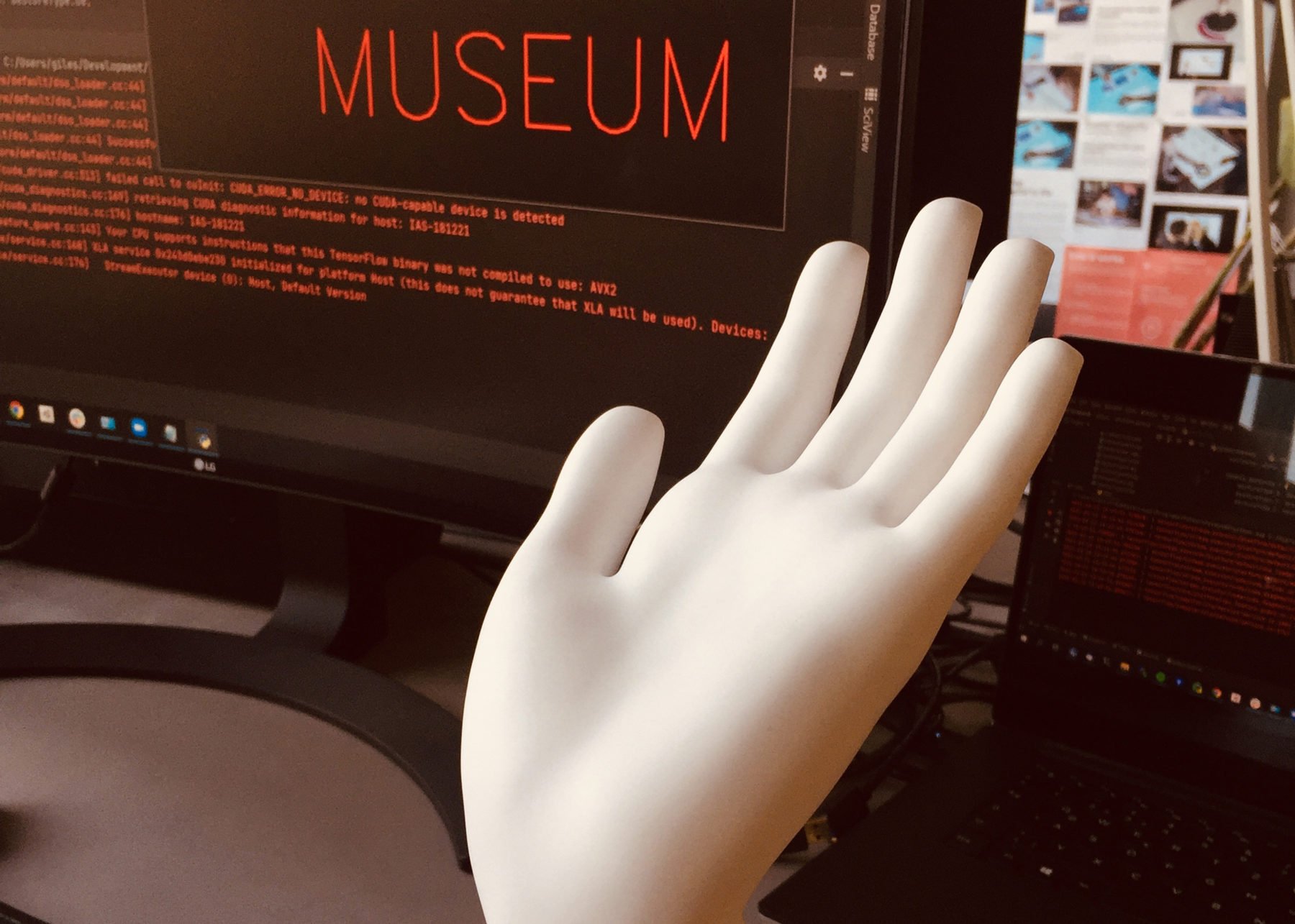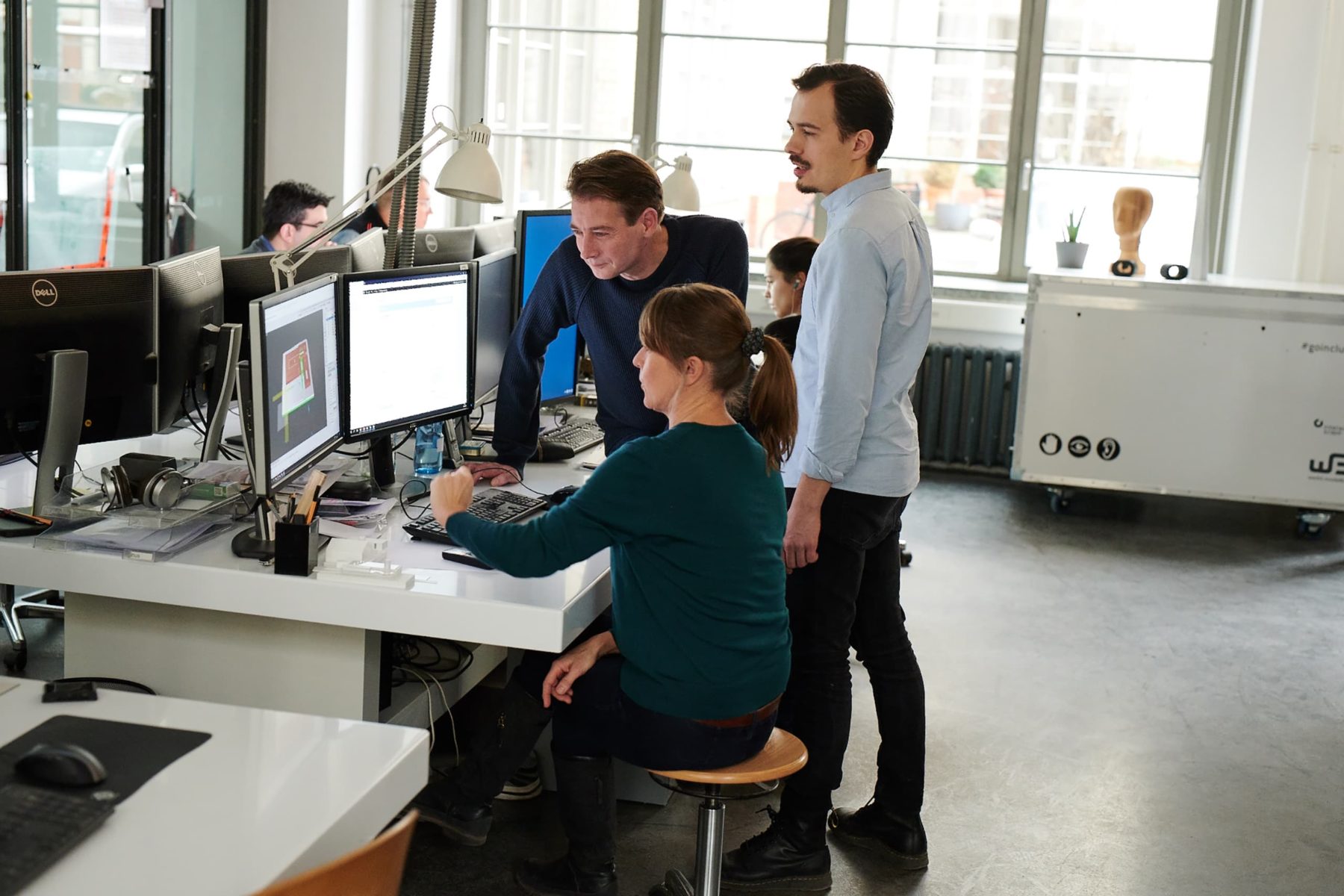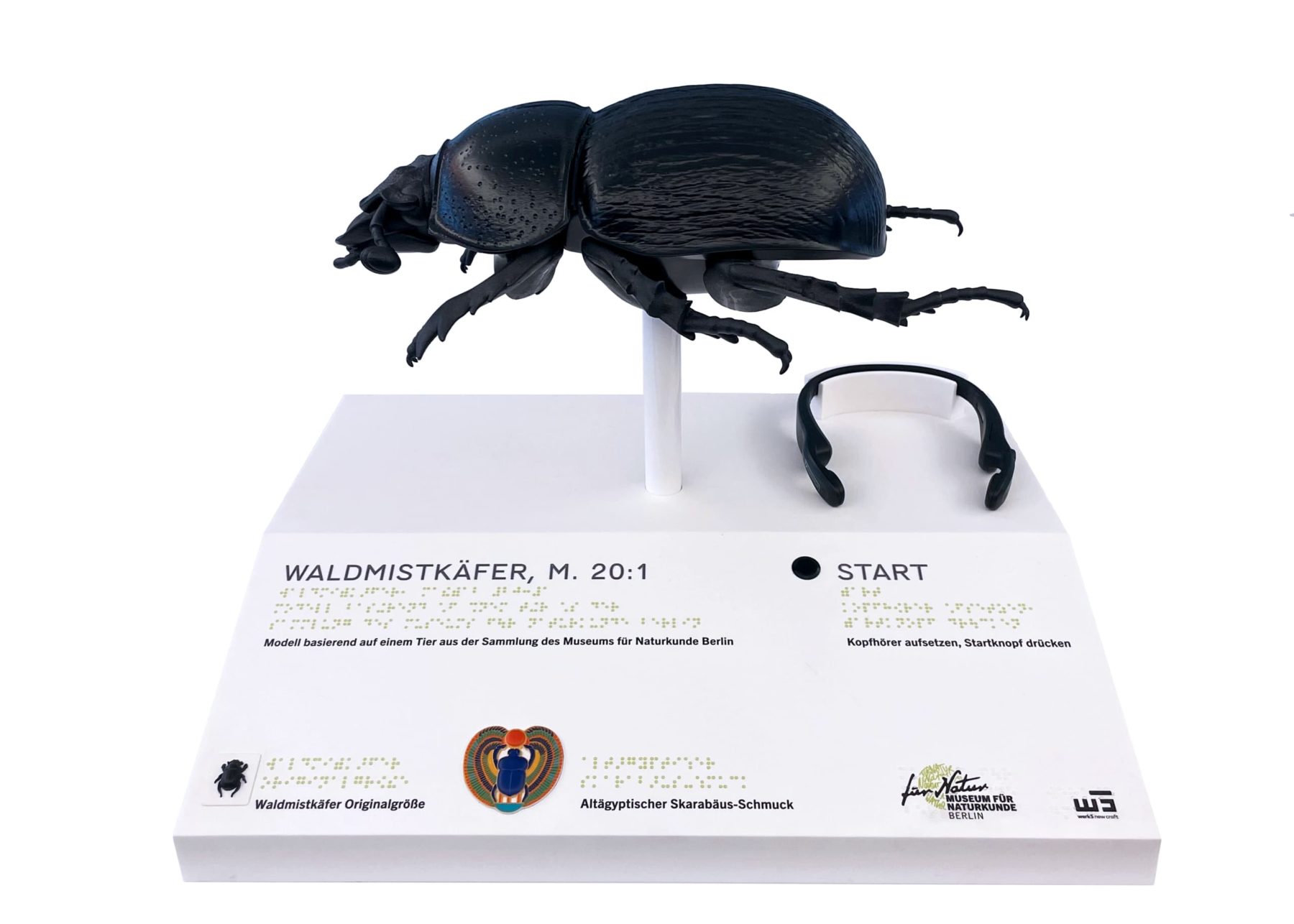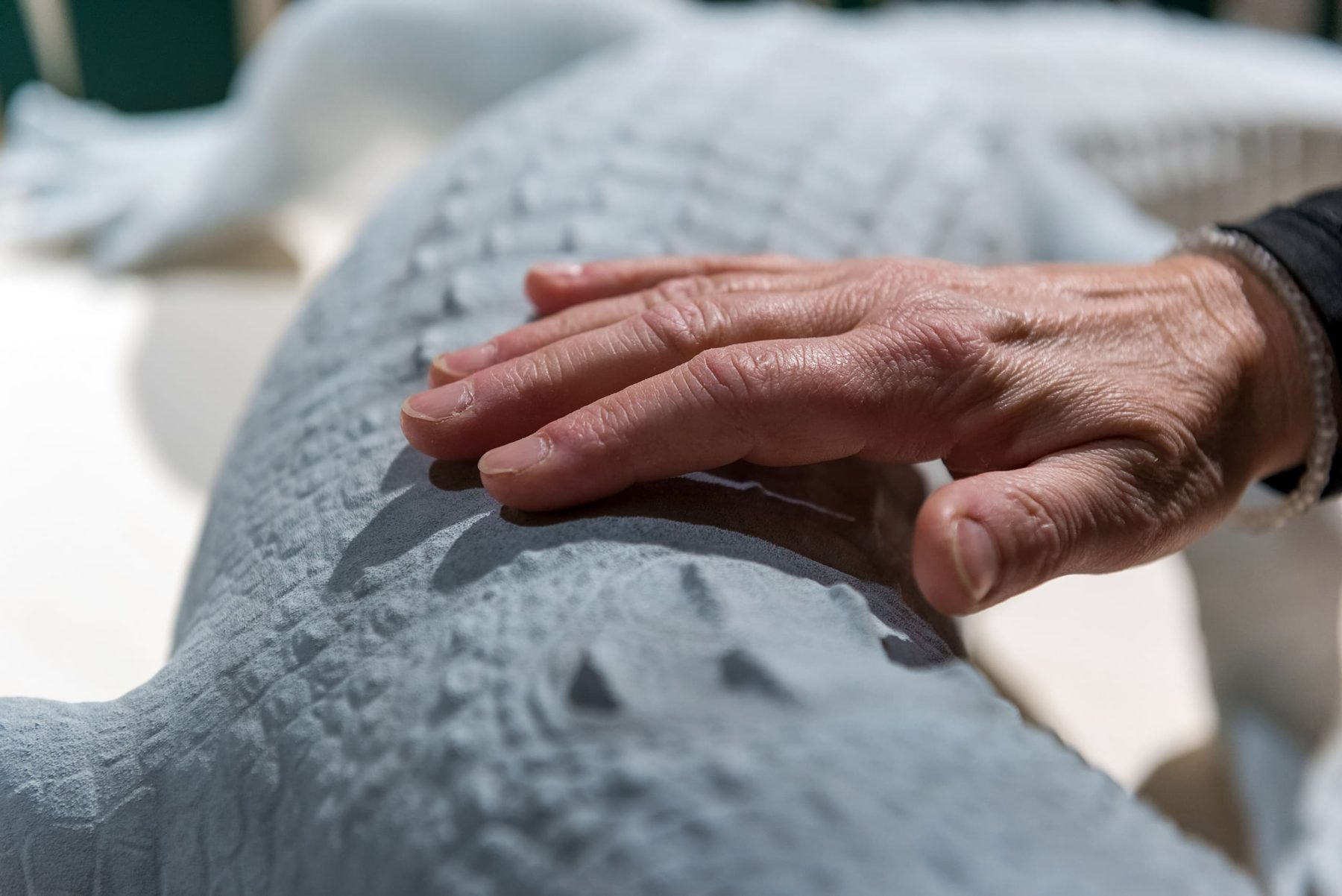To make the tactile model of a dor beetle talk, we combined a gesture recognition software with tactile sensor technology.
The research project was initiated by the museum’s systematic sifting of the collection, in which parts of the insect collection are being digitized. The Museum’s touch tour adventures, in which blind and visually impaired visitors go on a tactile independent journey of discovery, served as an inspiration. The collection of tactile objects is now supplemented by a highly scaled insect tactile object.
For the implementation of the tactile model of a dor beetle from the entomological collection, we equipped the entire surface of the beetle with a sensor technology that recognises gestures and plays audio content.
That tactile models, with the help of AI, can turn into interactive control elements, has already been demonstrated in 2021 with our ‘Lorm-Hand’ exhibit.
How does it work?
Discover more